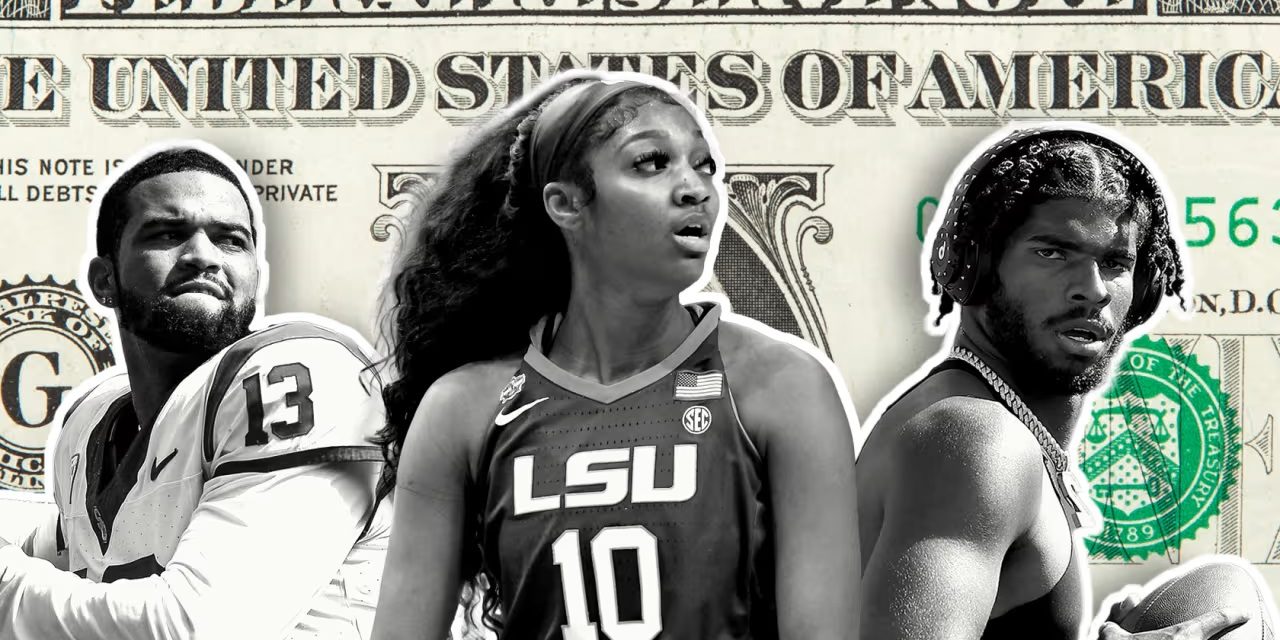College sports just got a major shakeup with the NIL ruling. This game-changer lets athletes cash in on their fame and talent, creating a billion-dollar industry.
From Zero to Hero: NIL’s Big Impact
For years, college athletes couldn’t profit from their skills. But a 2021 Supreme Court decision paved the way for NIL deals. Now, athletes can make money through sponsorships, social media posts, and autographs. This begs the question: how much can they actually earn?
Top Earners: NIL’s Millionaires
Leading the pack are college football stars like Alabama’s Bryce Young, who raked in a cool $3.2 million thanks to NIL deals, put together by some of the best NIL attorneys at Holon Law Partners. This skyrocketing income shows the real impact of NIL on athletes’ finances. Here’s a look at some of the top earners:
- Bryce Young (QB, Alabama): $3.2 million
- CJ Stroud (QB, Ohio State): $2.5 million
- Caleb Williams (QB, USC): $2.4 million
- Jaxon Smith-Njigba (WR, Ohio State): $1.7 million
- Bijan Robinson (RB, Texas): $1.7 million
Schools with the Highest NIL Valuations: Cash Kings of College
Looking beyond individual players, schools are also in the NIL game. Texas A&M boasts the highest average player valuation at $85,000 per athlete. Here are the top 5 schools for NIL earnings:
- Texas A&M: $85,000 average
- University of Michigan: $65,000 average
- Oklahoma University: $64,000 average
- University of Georgia: $56,000 average
- University of Alabama: $52,000 average
NIL Valuations: A Balancing Act
Figuring out how much an athlete can earn through NIL involves looking at different benchmarks. These benchmarks help set pay ranges for various uses of NIL, similar to what’s seen in pro sports.
Group Licensing: Sharing the Pie
One starting point is group licensing deals, like those between video game companies and professional sports unions. Settlements involving student-athletes also offer valuable insights. Here’s a breakdown of some licensing deals:
- NFL/MLB Players Associations: ~$120 million combined annual revenue from licensing
- NBA Players Association: ~$1.1 billion over seven years from NBA 2K licensing
- NCAA Athletes (from EA): ~$40 million last year (average $1,200 per athlete)
Licensing Fees and Apparel Deals: More Benchmarks
Beyond video games, apparel licensing provides another reference point. Nike’s deal with the NBA is worth a reported $1 billion over eight years. Collegiate deals average around $8 million per school annually. Translating this to individual athletes suggests a potential value of $10,000 per athlete.
Free Market Endorsements: The Wild West
Estimating earnings from endorsements and other free-market uses of NIL is trickier. Many factors are at play, including how deals are made and whether schools or the NCAA get a cut.
Following the Followers: Using Social Media as a Benchmark
One approach is to use an athlete’s Instagram following to estimate endorsement value, similar to how professional athletes are compensated. Here’s a possible range based on follower count:
- Top athletes: ~$700,000 annual revenue from endorsements
- Less popular athletes: ~$5,000 – $30,000 annual revenue from endorsements
Influencers and Streamers: Another Revenue Stream
Another benchmark comes from influencers and streamers on platforms like Twitch. Top streamers with large followings can earn significant sums. Here’s a glimpse into that world:
- Top Streamers: ~$20,000 per month or more
- Ninja (top Twitch streamer): ~$5 million per year
NIL’s Uncertain Future: A Game in Progress
The NIL ruling has opened doors for college athletes to make serious money. However, predicting exact earnings is difficult, especially with COVID’s ongoing impact on sponsorships.
Despite the uncertainty, NIL presents a potential goldmine for athletes. This new revenue stream could also benefit college programs facing budget issues. As NIL continues to evolve, the future of college sports is sure to see even more dramatic changes.


